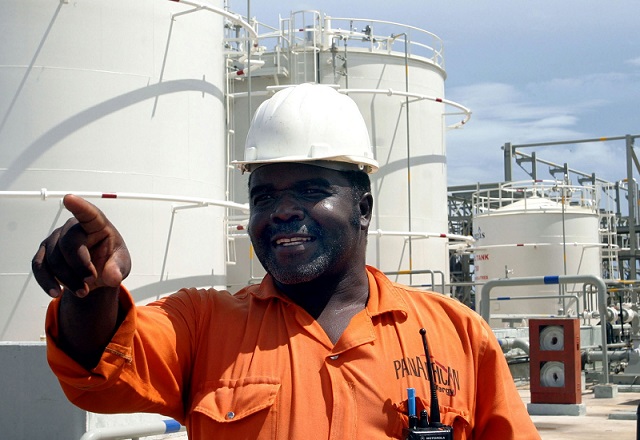
When local hopes are dashed by global realities
Kampala, Uganda | AIDEN BARLOW | Rising international commodity prices can shape or reshape the fortunes of places. When large mining and oil and gas prospectors suddenly show an interest, a remote area can become a resource frontier a place that’s far from the socioeconomic centre of a country but important to its economy.
High commodity prices throughout the late 2000s and early 2010s resulted in new regions of the world being explored for hydrocarbons. One of these areas was off the shore of southern Tanzania, in Mtwara.
Between 2010 and 2015, Mtwara went from a backward periphery to the forefront of Tanzania’s gas sector.
By 2011 reports claimed that Tanzania’s natural gas reserves had risen to more than 10 trillion cubic feet (tcf) from a previous estimate of 7.5 tcf following major gas discoveries in the country’s deep-water offshore region. Three offshore gas fields had been discovered in the deep waters.
Mtwara is a region in the far south of Tanzania, on the border with Mozambique. Historically, it has been geographically isolated through poor infrastructure from the rest of Tanzania. The local population has felt overlooked by both colonial and postcolonial governments, with the southern regions historically performing more poorly than their northern counterparts.
My research in Mtwara explored people’s expectations in response to the extraction of natural gas, and how factors like commodity price cycles and mining life cycles influenced the political economy of development in short, the way that politics and economics interact and affect each other.
It became clear during my research that the gas industry was expected to speed up development in Mtwara. The imagined future of Mtwara changed from moderate expectations to one of increased wealth and prosperity.
In effect, the creation of a resource frontier changed expectations of what development would bring for people on the frontier, and how quickly it would happen.
These expectations were not met. Natural gas prices fell from US$16 per million metric British thermal unit (MMBtu) in 2009 to US$4 MMBtu in 2017. Oil and gas companies mostly lost interest in Mtwara and related sectors collapsed.
Remnants of the expected boom, such as half-built hotels, higher food prices and a more reliable electricity supply, remain. But many of the jobs have gone.
This research adds to an understanding of how natural resources interact with development. In Mtwara, it was less the resources themselves that caused the boom, but rather the anticipation of a future gas boom. When it failed to materialise, the area suffered a very real bust. This possibility is something that resource-based development strategies need to take into account before major extraction even takes place.
The anticipation
The discovery of gas was accompanied by infrastructure in the forms of increased electricity generation and access, improved roads, and construction of new buildings. There were also plans and promises for industrial development utilising gas both as a raw resource in production and as fuel for electricity generation, according to my research entitled `Piping Away Development: The Material Evolution of Resource Nationalism in Mtwara, Tanzania’.
The infrastructure and plans provided the confirmation that natural gas was to act as a modernising force for the region and boost economic and social development. Perceptions changed with the confirmation that a pipeline would be constructed to transport gas from Mtwara to Dar es Salaam for electricity generation, causing protests and riots.

The completion of the pipeline, combined with the government’s response to the protests, resulted in a change in the perception of what gas can provide for the region. With gas now going to Dar es Salaam, it has also symbolically removed the bedrock of a local gas-based developmental imaginary. Instead, gas has added to the historical grievances that many in the region perceive.
In Mtwara in 2018, I interviewed a variety of people, ranging from local business leaders, politicians and community leaders to villagers and people who used to work in the supply sector to the gas industry, about how development had been influenced by the gas sector. Be it discussions around the 2013/14 pipeline protests (against the construction of a pipeline transporting gas from Mtwara to Dar es Salaam) or electricity infrastructure being built, it quickly became obvious that everybody, in one way or another, had a story to tell in relation to gas.
But the interviews made it obvious that two communities in particular were affected by the gas sector: local businesses, and people living closest to the onshore extraction sites, in an area called Mnazi Bay.
I found that people expected natural gas to cause an economic uplift, and it was this that prompted considerable investment in the region.
Investment focused on supply sectors. Mtwara lacked any internationally certified hotels, catering companies or other amenities for oil and gas staff. Real estate and construction also rode this wave of investment.
Politics also influenced this. The ruling party in Tanzania, CCM, harped on this promise during the 2010 general election. The party’s campaign slogan – “Mtwara will be the new Dubai!” – was repeated to me throughout my time in Mtwara.
Mtwara became a frontier for international and domestic capital. A future fuelled by hydrocarbon wealth seemed assured.
Alongside political promises, the communities of Mnazi Bay had the impression that the gas industry was already having a positive economic impact. Roads were being improved, electricity infrastructure was becoming more reliable and expanded, and people were getting jobs in supply sectors for natural gas. They expected this to continue, and to obtain compensation for land being used by the gas sector.
Within just a few years, Mtwara’s economic prospects and imagined future had been dramatically entwined with international gas prices.
The reality
But by 2015, the gas prices that had made Mtwara a resource frontier in the early 2010s had reversed. The sectors that had done well during the presumed boom were hit the hardest.
Hotels that were constructed to accommodate high paying oil and gas employees now had to change their business model and cater to lower-paid locals and seasonal cashew traders. Cashews were the bedrock of the local economy before the discovery of natural gas. A number of half-built hotels remain across the city, particularly along the coastline.
In my interviews, villagers close to the onshore extraction tended to discuss development going at a slower pace than during the “boom”. Sacrifices, such as giving land to gas infrastructure, did not result in increased development, and many jobs turned out to be temporary construction work that disappeared with the bust.
What’s more, the industry left environmental effects such as pollution and destruction of cash crops.
An unwritten social contract had been broken.
Perceptions of what gas could bring in the future changed. Gone was the belief that gas would accelerate development. The pace of development was seen to have returned to “normal”, meaning the pace before the discovery of gas.
The economic potential is still there, but the low global prices of the late 2010s ensured that the sector would not play a role in economic growth.
The changing energy landscape
Historically, Mtwara had been at the margins of the global economy, acting as a supplier of raw cashew nuts. With the discovery of natural gas, the region suddenly changed into an “energy frontier”, opening it to considerable investment from both domestic and international capital. Rapid changes in the energy landscape can create and recreate frontiers quickly, and change the lives of those who live in such frontier regions.
Since this research has taken place, there has been considerable change in the energy landscape. Russia’s invasion of Ukraine has pushed up gas prices, and European leaders have begun to see Africa as a potential source of natural gas. There is once again the “potential” to create Mtwara into a true resource frontier. But it remains to be seen if such rising prices recreate excitement on the ground.
******
Aidan Barlow is Lecturer, Department of Social & Policy Sciences Centre for Development Studies, University of Bath
Source: The Conversation
 The Independent Uganda: You get the Truth we Pay the Price
The Independent Uganda: You get the Truth we Pay the Price


